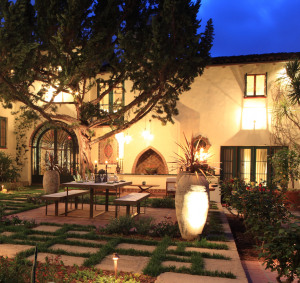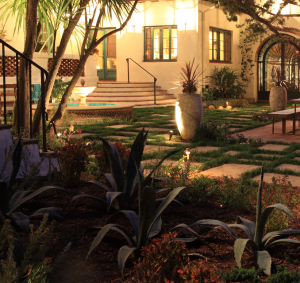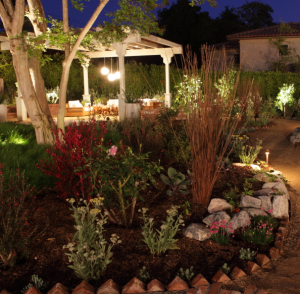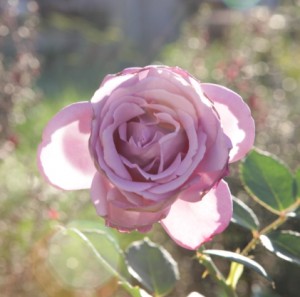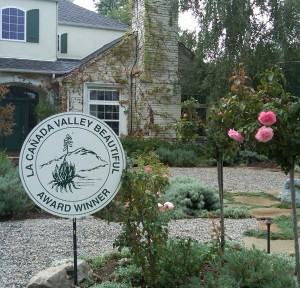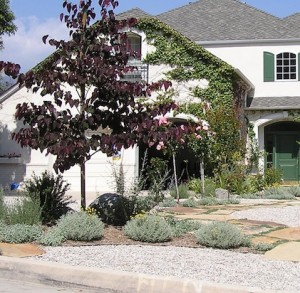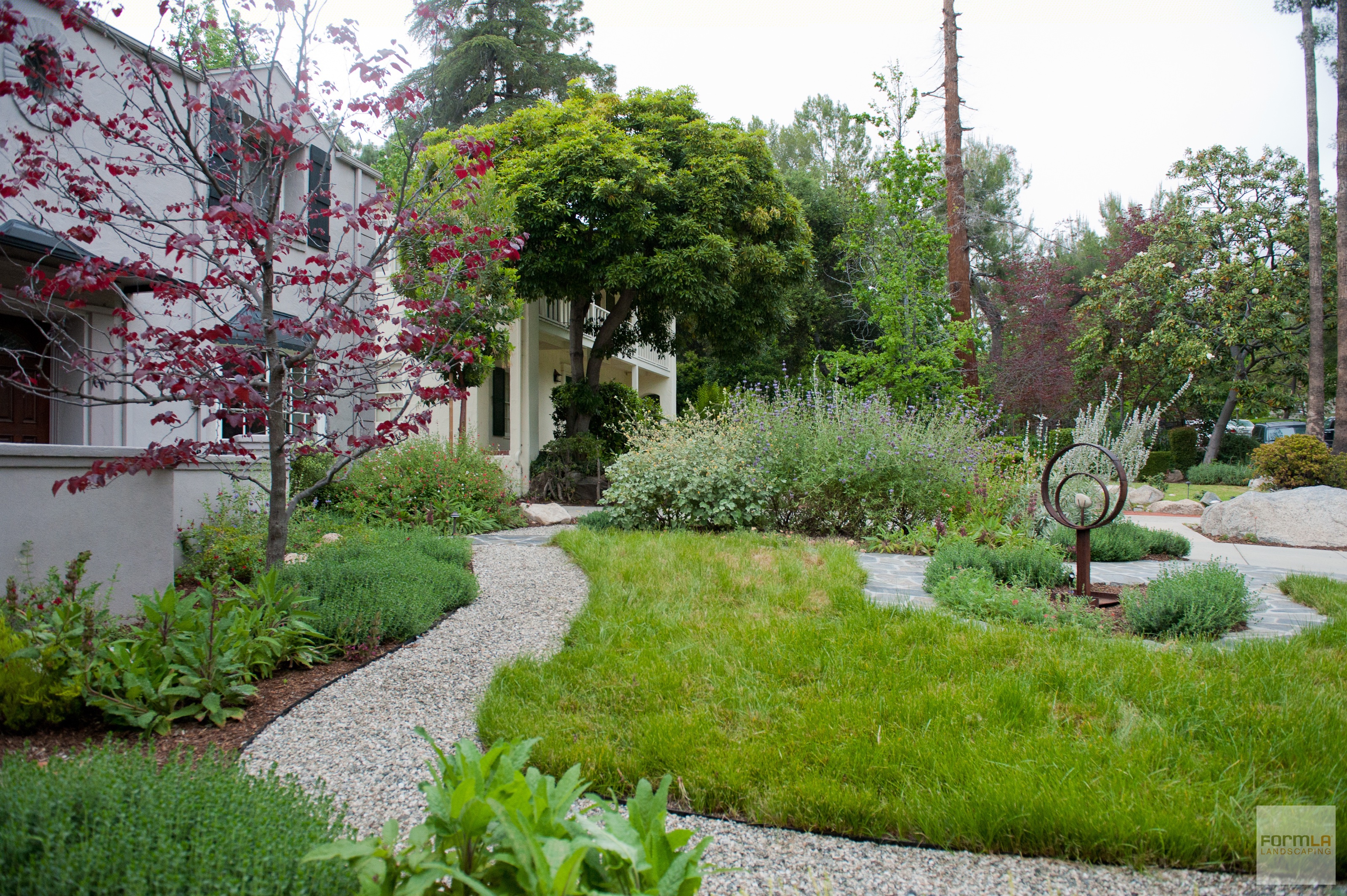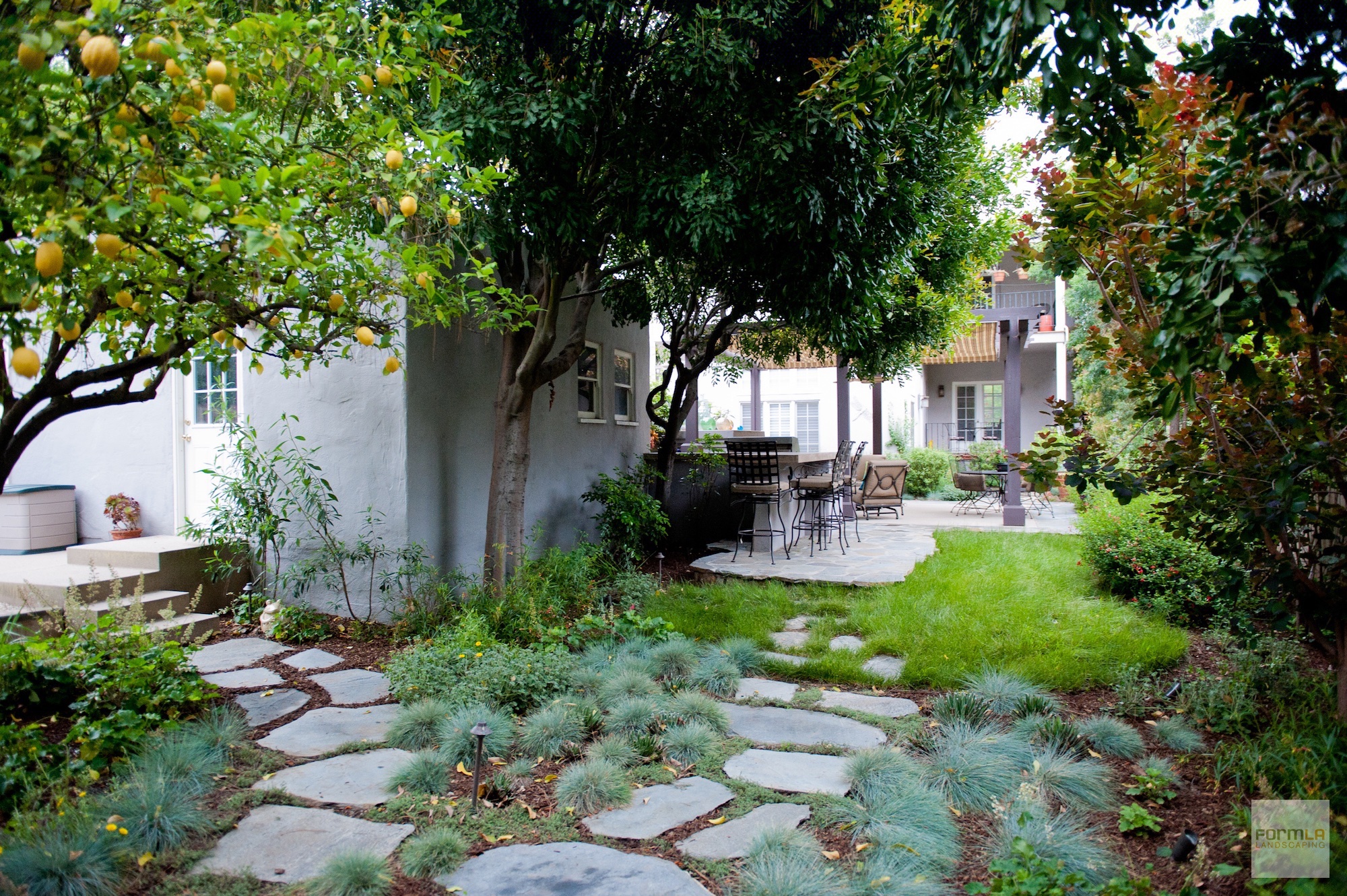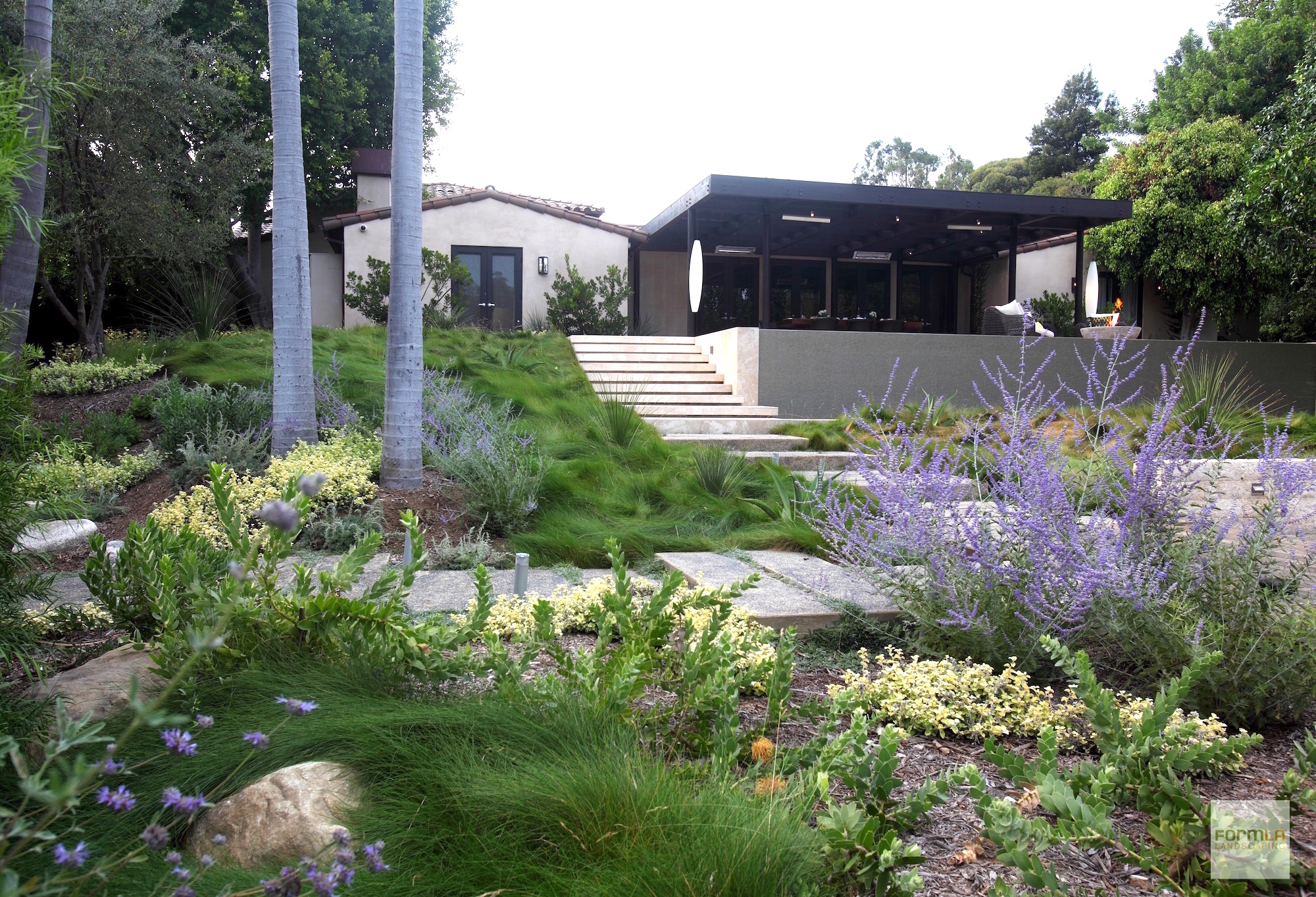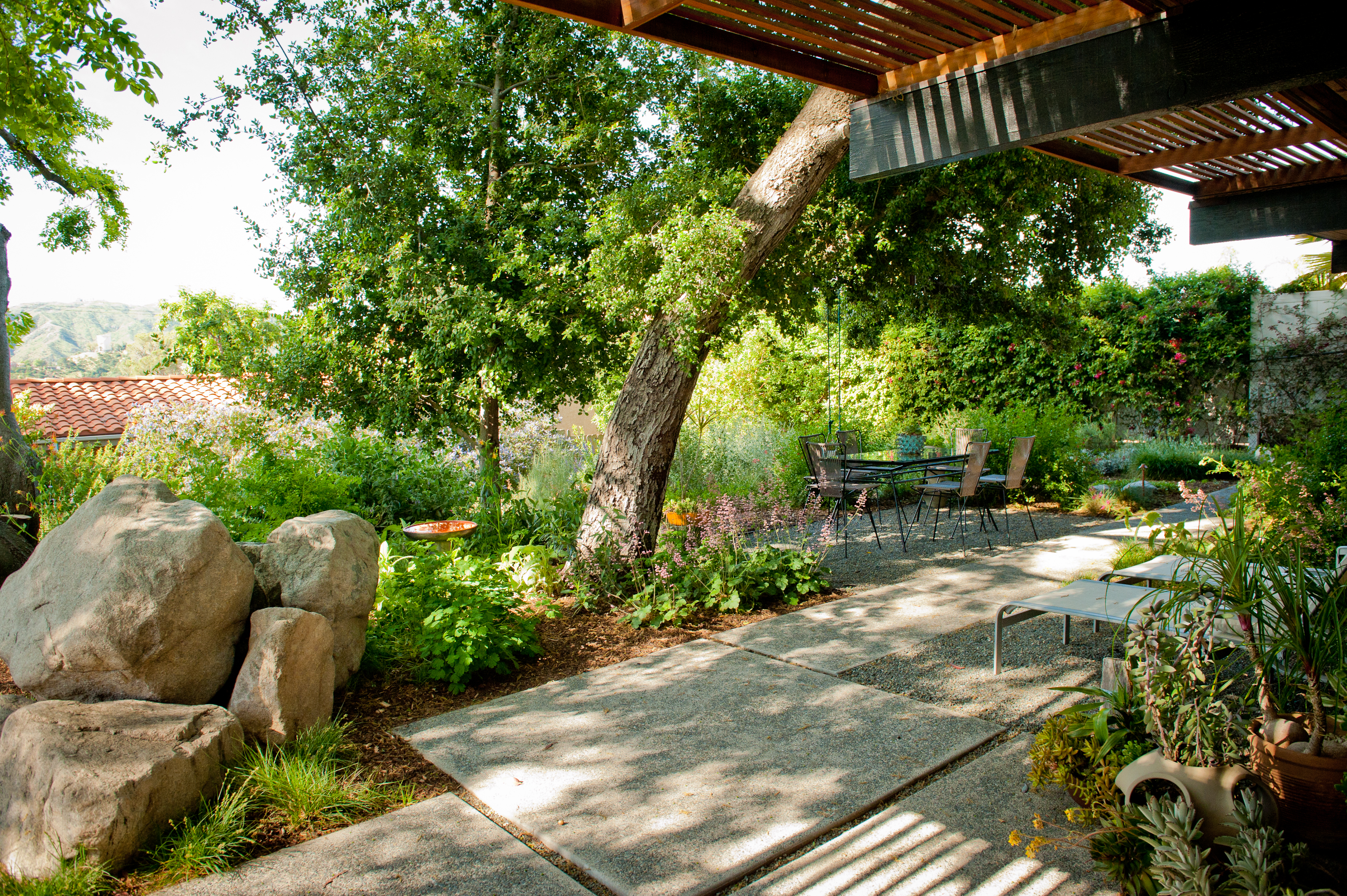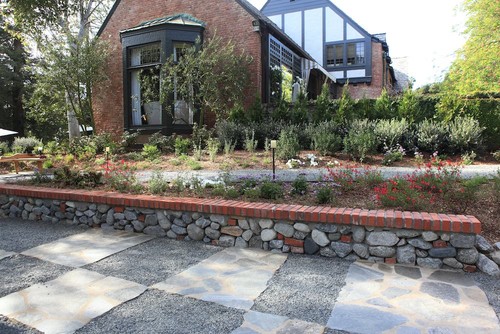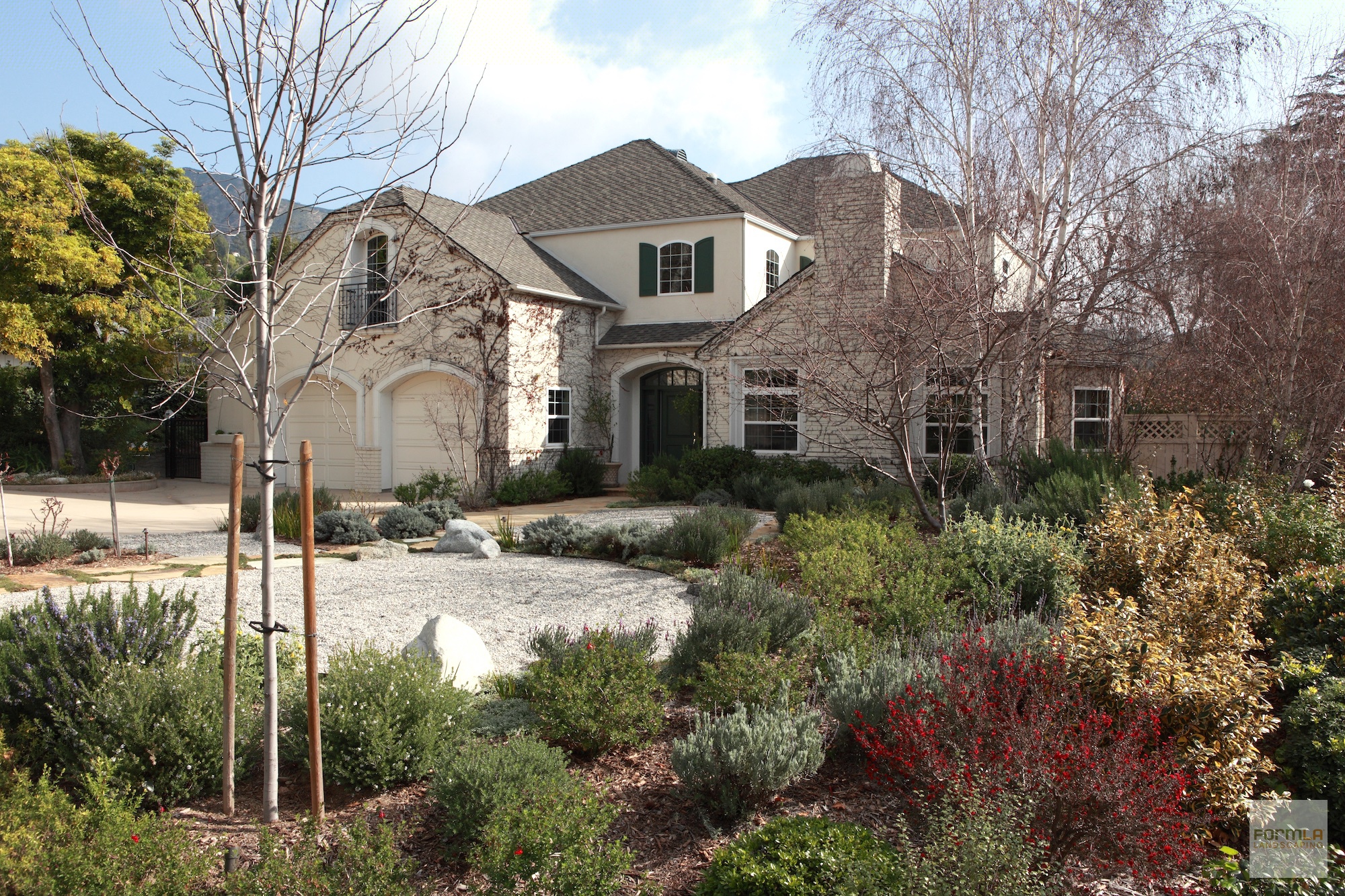3 Design Strategies for Sustainable Rose Gardens
Many non-native species from roses to Birds of Paradise hold romanticized positions within California landscapes. The current drought will press these plants harder than it does our hearty natives. Concerns for sustainability tend to be paired with aesthetic considerations. By today’s aesthetic standards, a traditional rose garden can feel overwhelming. With so many roses in one place, the appreciation for each bloom diminishes. Even the delicious scent of a rose may be lost in the crowd. We have strong strategies that address both aesthetic and sustainability concerns, allowing each rose to generate wonder while leaving the land no worse off for the delight it brings.
1) Isolate traditional foliage beds and add state of the art hardscapes and irrigation.
In the Andalusian Courtyard of the 2012 Pasadena Showcase House of Design, there were several dozen Roses of sentimental value to the owners. We embraced the opportunity to incorporate them into the design, and reinstated them as a focal point at the edge of the courtyard opposite the house. Because they were placed in an isolated bed where their soil, nutrients and water needs could be customized, the landscape beyond the roses could be optimized for sustainability. Beyond the rose bed, climate friendly California and Mediterranean foliage allowed the rosy riot of color to take center stage, drawing the eye to the astounding view of the Angeles Forest beyond.
2) Integrate roses as accents in cut-flower gardens.
We used an entirely different but equally compelling strategy at the most recent Pasadena Showcase House of Design. Again, several dozen roses were of sentimental value to the owners. This time instead of sectioning them off, we allowed them to serve as the main foliage alongside a meandering path. We incorporated our more sustainable California and Mediterranean plant material in the foreground and back ground and surrounded the roses with an edible forest and cut garden. Visitors delighted in the discovery of each bloom, truly stopping to smell and enjoy the roses. Selectively integrating roses into sustainable landscapes can enhance appreciation for their charms.
3) Create a seasonal focal point.
This La Canada Valley Beautiful winning garden was featured on the USGBC San Gabriel sustainable garden tour for its water-wise hardscapes and plant palate. Three rose bushes ensconced with permeable gravel and flagstone patios and climate compatible Mediterranean foliage connect to the community’s more traditional aesthetic. When the roses are cut back or out of bloom, the always-vibrant Mediterranean foliage ensures the garden aesthetic maintains vibrance year round. When they are in their glory, the roses welcome the residents home with an opportunity to stop and smell the roses.
